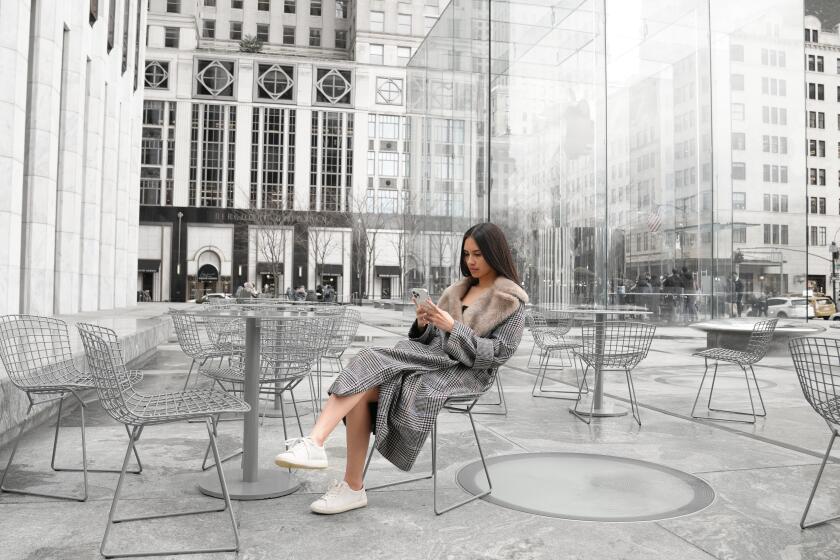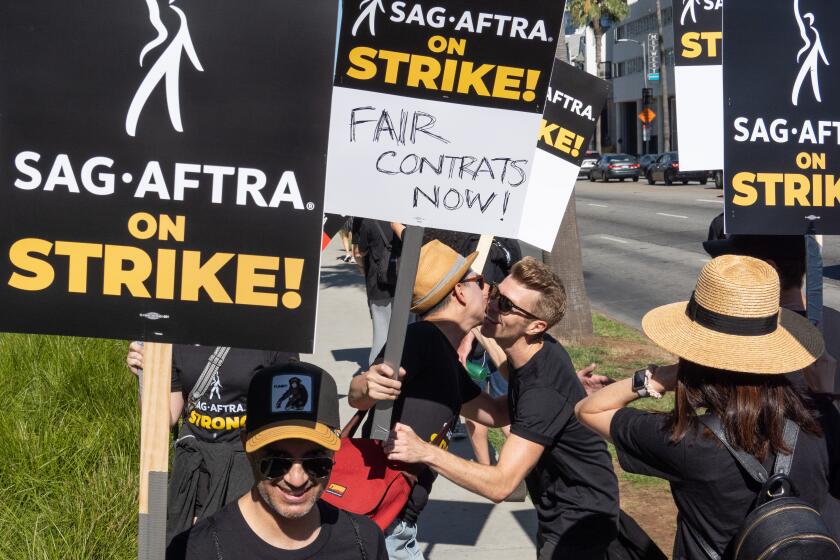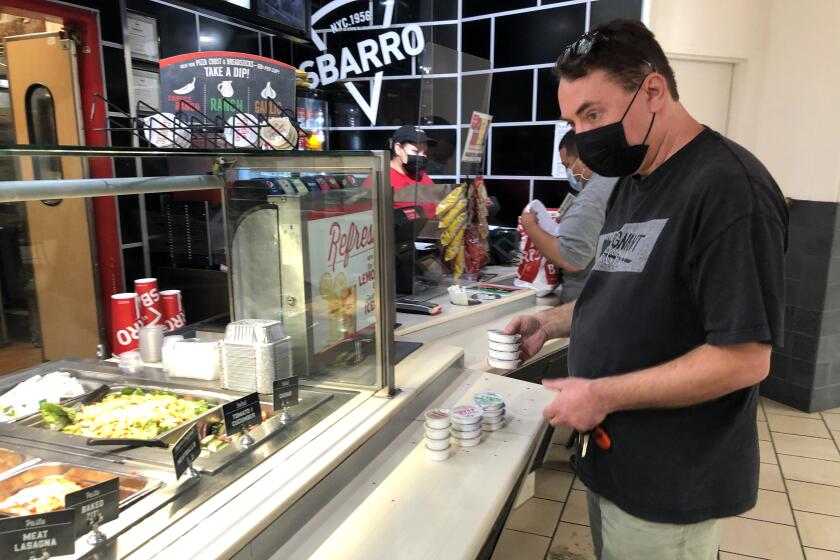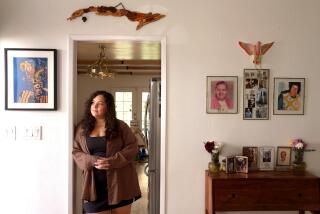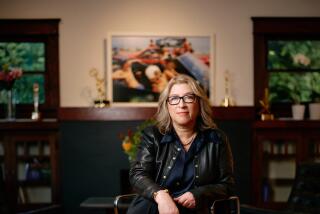These film school grads ditched studio jobs for YouTube and TikTok. How’s that going?

- Share via
Adrienne Finch had a tough choice to make. After leaving Loyola Marymount University in 2015, her screenwriting degree in hand, she secured an opportunity many film school grads would salivate over: a job offer from Warner Bros.
But although the publicity assistant position was the sort of entry-level role that young creatives often take out of college to wedge their foot in the entertainment industry’s door, spending the next five years as an assistant seemed unfulfilling.
Finch instead opted to follow a different path into the limelight — one that, in the mid-2010s, was only just starting to take shape.
She became a creator on social media.
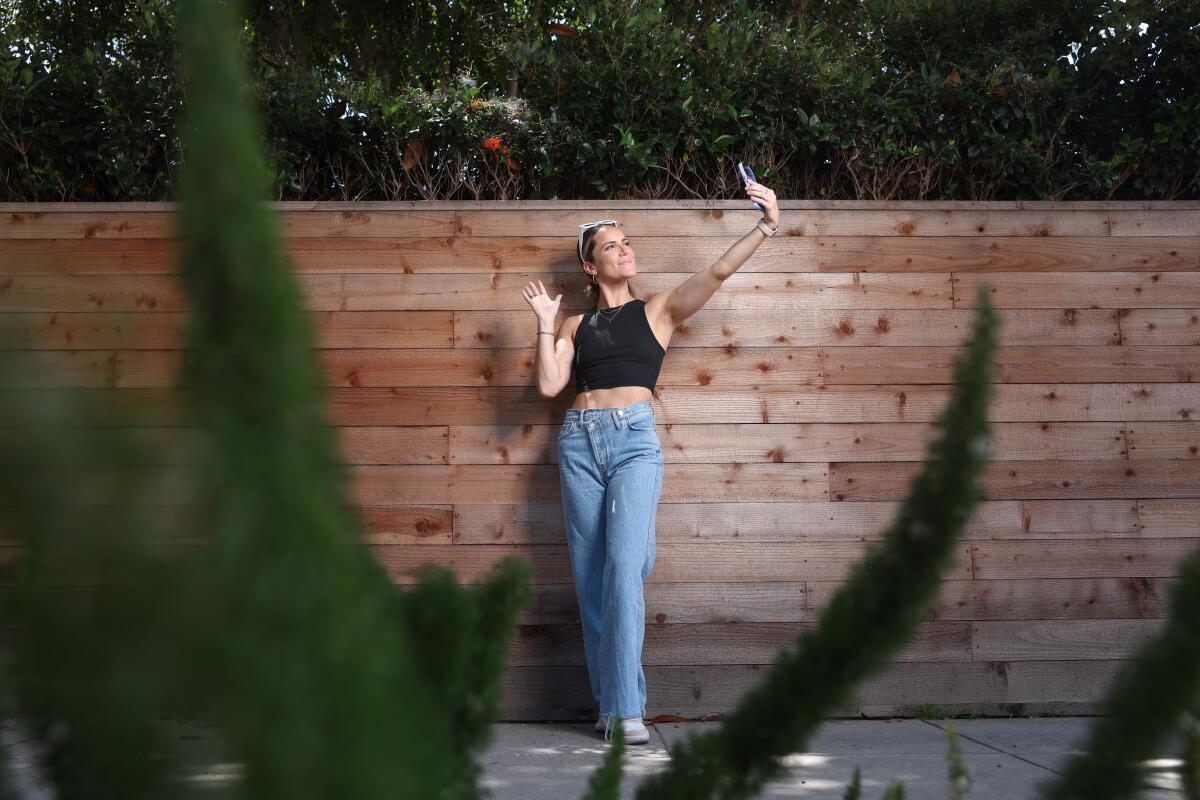
Finch already had several friends who were making money on YouTube, and following in their footsteps seemed like a way to circumvent several years of early-career dues-paying. So she turned down the Warner Bros. gig and instead took a job with a smaller digital-focused production company, one that would give her the space to build a YouTube following on the side. After a year, she left to focus on YouTube full-time.
“It was a huge deal, saying ‘no’ to a big-name traditional company and then forging this path that was risky at the time,” said Finch, now 30 and living in Santa Monica.
But the gambit worked. These days, as a technology and entrepreneurship-focused influencer, she has more than a million followers across YouTube, TikTok and Instagram and says she makes between $100,000 and $150,000 a year.
Caryn Marjorie, an influencer with 2 million followers on Snapchat, recently made a digital clone of herself. But what happens to social media creators when the robots come for their jobs?
In the time since Finch opted to take that road less traveled, the social media economy has continued maturing, most notably with the pandemic-era rise of TikTok and the increased monetization of web content. It now offers people with entertainment industry aspirations an alternate forum through which to express — and profit from — their creativity.
It’s hard to say whether that new model of success is an improvement on Hollywood’s traditional modus operandi. As with the usual system, social media offers no guarantee of success and carries the threats of burnout, inconsistent pay and work-life imbalance.
It’s also a largely nonunion career path. That’s made it hard for influencers to collectively bargain for better conditions but — during the writers’ and actors’ strikes in Hollywood — that also means they’ve been able to keep working when other entertainers cannot. (For the most part: The actors’ union, SAG-AFTRA, has threatened to blacklist anyone who takes a deal with a struck company.) Two days after actors took to the picket lines, Finch posted a YouTube video — sponsored by Logitech — titled, “Turning My iPad Pro Into a Productivity Machine.”
Yet viral celebrity, for all its quirks and flaws, remains alluring. Many Americans now aspire to becoming influencers themselves; one poll found that 54% of respondents ages 13 to 38 would do so if given the chance.
Social media influencers — who make their livings as entertainers but aren’t typically part of entertainment unions — now face the complicated labor politics of a Hollywood strike wave.
Film schools and acting classes — often the conventional path for breaking into the entertainment industry — offer a peek into that evolving arena of fame and fame-seekers, who now have an alternate route to consider post-graduation.
Gray Fagan studied directing and editing at Chapman University in hopes that he would one day find work in the film industry. But after graduating in 2021, he struggled to get hired as an executive assistant, a role he saw as a tried-and-true on-ramp into showbiz.
He instead opted to go all-in on creating TikTok comedy videos, a pastime he’d gotten serious about during the pandemic.
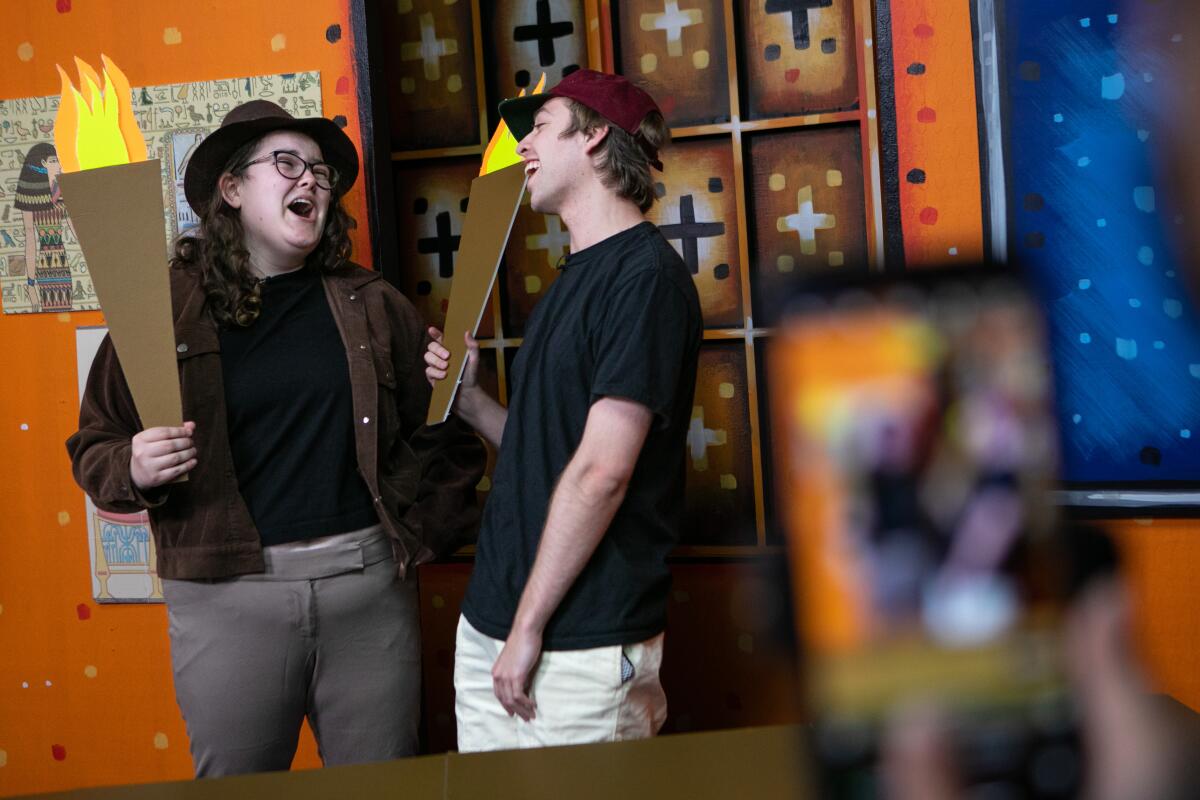
Fagan now has 5 million followers watching as he transforms into a coterie of strange characters: a psychotic emo kid, an old-timey farmer, an over-committed Renaissance fair patron.
And as unconventional as his trajectory was, he says he wouldn’t have pulled it off without the groundwork laid by his degree, which connected him with other creatives and taught him the fundamentals of storytelling.
“When you watch the videos, you wouldn’t notice we spent an hour identifying what the logline of the short one-minute video is,” Fagan said. “What are the three acts within this one-minute video, and how do we keep everyone’s attention? … All these very traditional writing and performance principles that we learned in school, we’re incorporating.”
Other film students embrace social media not because they can’t break into Hollywood but because when they do, they don’t like what they find.
Worsening economic conditions could be a stress test for the burgeoning influencer economy. But online creators are pivoting by telling viewers what not to buy.
Kate Albrecht graduated from Loyola Marymount’s film school in 2006. She was a working actor at the time, and her experiences with the film and TV world left something to be desired.
“When I was acting, I was very much pigeon-holed,” Albrecht said, citing a few of the less-than-flattering roles that she, as a young blond woman, was often cast in. (The ditz, for example.) “I was really seeking other outlets for my creativity.”
Those frustrations led her to start a blog about jewelry-making, fashion and home decor that eventually evolved into a YouTube series, “Mr. Kate.” She and her boyfriend (now husband), Joey Zehr, began funneling resources into the channel, capitalizing on Albrecht’s film school experience to juice the production value, and at this point have nearly 4 million subscribers.
That young people are increasingly using social media as their creative outlet is a point not lost on Southern California’s film schools.
Joanne Moore, dean of the film and television school at Loyola Marymount, said the rise of short-form video seems to have led more young people to pursue film and television careers.
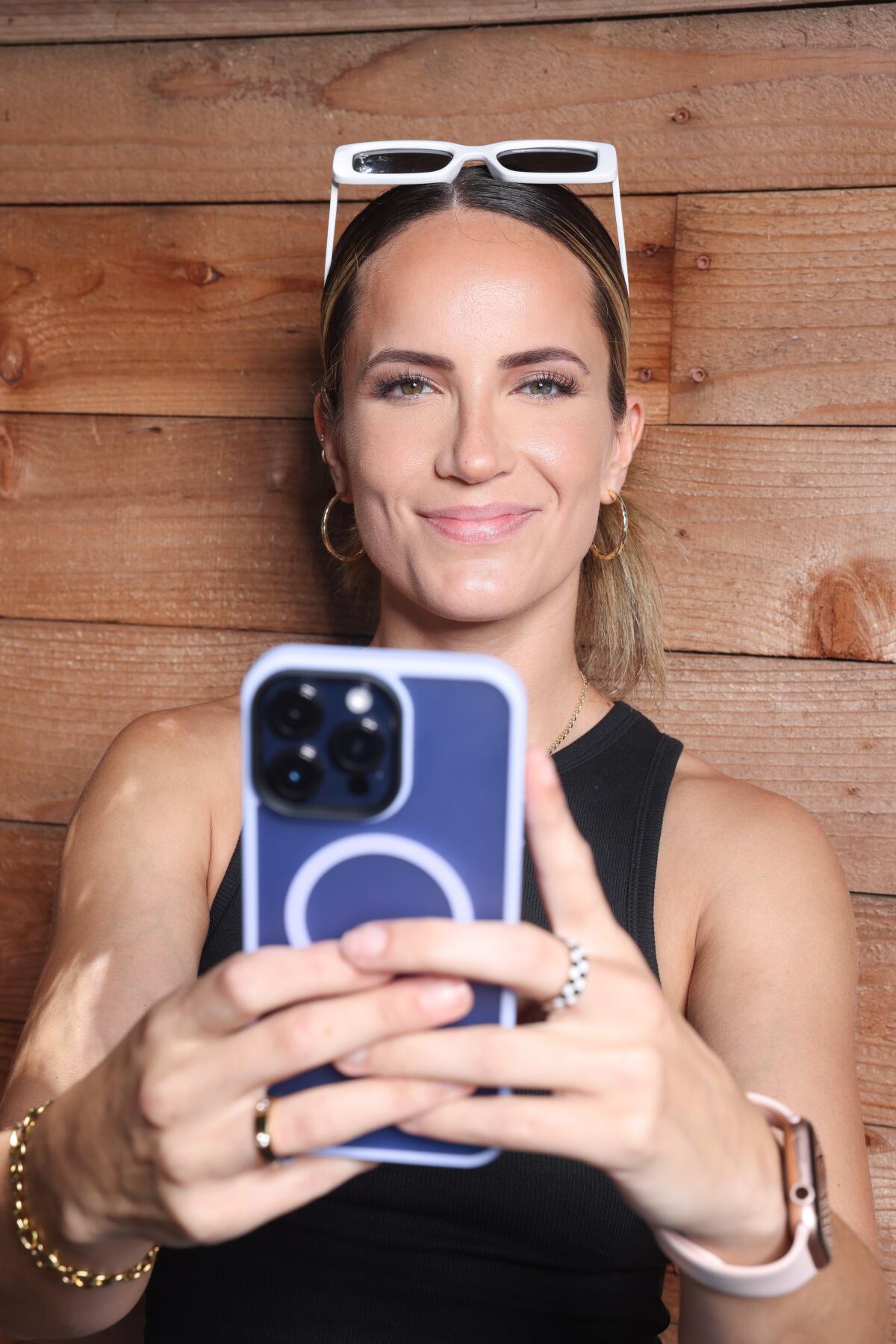
“Enrollment numbers for film schools are robust,” she said in an email. “I believe that is due, in part, to social media platforms introducing new generations to storytelling, creative expression and demonstrating non-traditional pathways into the business.”
Indeed, film schools across the Southland have begun offering courses focused on social media’s visual storytelling capabilities. They say they’ve seen a mix of students sign up: From those for whom becoming an influencer is the end goal to those who see social media as a stepping stone into Hollywood.
“Some students of mine, they want to be doing internet content so that they get a ton of views and then maybe they turn that into a writing career or a directing career,” said Christopher Guerrero, an adjunct associate professor at USC’s School of Cinematic Arts who teaches classes about internet comedy. “Sometimes it’s like they just want to be influencers.”
Sam Pocker, known by his handle @FastFoodLegend, is a minor celebrity on TikTok for his avant-garde gross-out videos. But chasing social media stardom comes at a cost.
The trajectory can go either way. While some creators are parlaying their entertainment industry training into a social media career, others are leveraging their followings to get entertainment industry work.
Marquee online creators, after all, are now getting cast in big-budget features. Web personalities are leaping from digital acclaim to Tinseltown, including Quinta Brunson (“Abbott Elementary”), Megan Stalter (“Hacks”) and the sketch comedy trio Please Don’t Destroy (“Saturday Night Live”). The recent indie horror hit “Talk to Me” was directed by a pair of YouTubers.
Shannon Sturges, the owner and operator of the Speiser/Sturges Acting Studio — a small black-box theater tucked between a Starbucks and an auto body shop off La Cienega Boulevard — said she first noticed social media influencers signing up for her classes around 2018. These days, she estimates, five to 10 of them reach out every month, with about one-third to one-half of them actually enrolling.

“Either [it’s] their management, their team, that wants to put them into more mainstream things or they just … want to broaden themselves as actors and be more castable,” Sturges said. “They already made it to be stars on social media; I don’t think they need to be a trained actor to do that. But I think when you want to move into film and television, you do need that training.”
One of Sturges’ students, Daniel Peera, is a case in point. An actor with credits on “NCIS” and “McMillions,” Peera embraced social media during the pandemic in hopes that the exposure would help him land more roles.
But although he consistently goes viral on TikTok, he remains focused on honing his skills as an actor. That’s how he wound up on the stage of the Speiser/Sturges studio one summer evening, workshopping a scene from the 1987 Broadway hit “Burn This.”
“My feet are killing me, like I’m boiling in these shoes,” he growled. Tossing his jacket aside, he sat back on a couch and slipped off the offending footwear. “Genuine lizard, $245 bucks ... pinching everywhere. Jesus!”
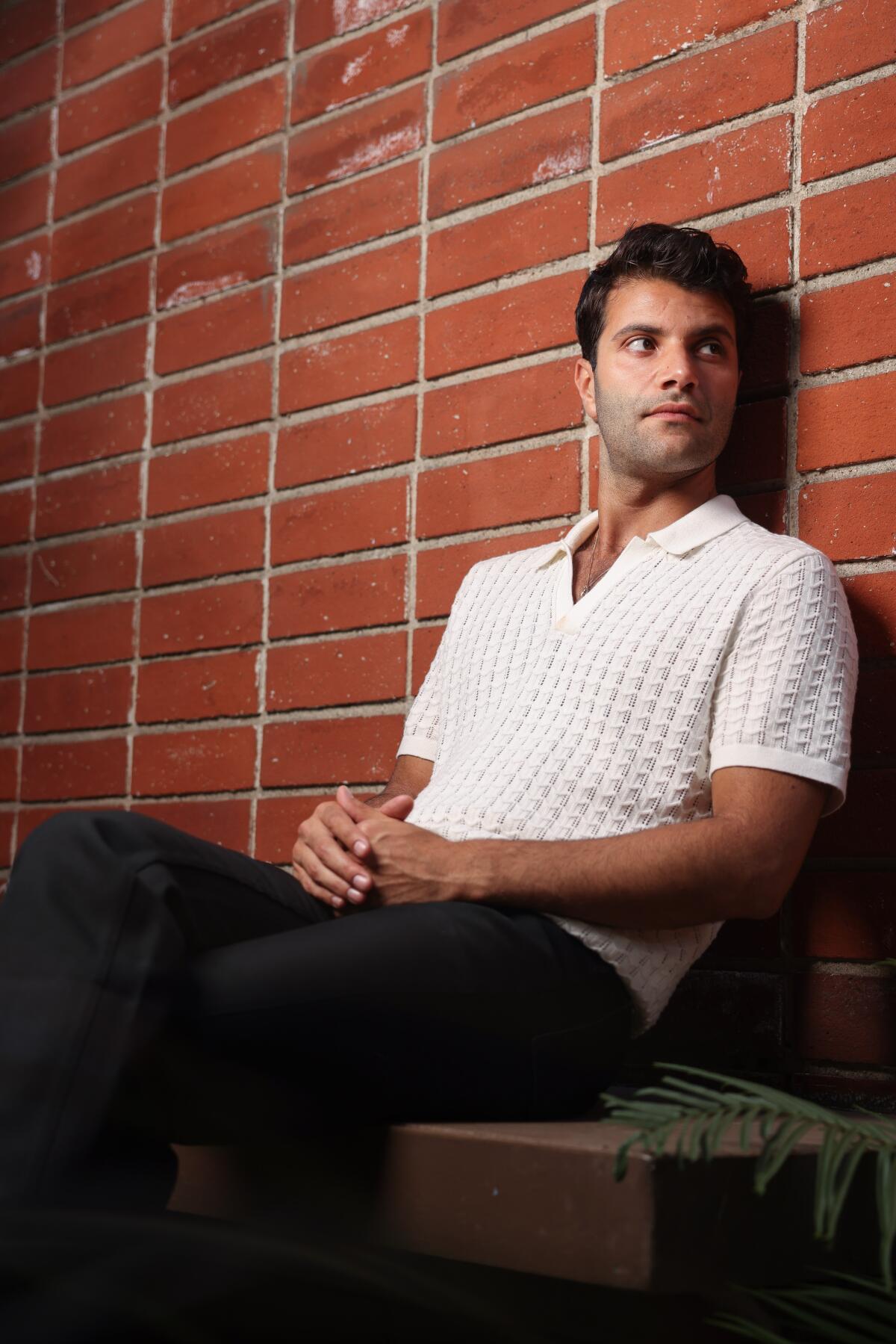
His character, a traumatized and volatile coke fiend, is a serious role compared to his short, goofy internet sketches.
But Peera doesn’t see a contradiction.
“The tools I was using in class and on set to [do] storytelling and character work and elements of comedy, they’re the same things that are going into writing the material on TikTok,” he said. “And then conversely ... the actual act of making the content has made me a better actor.”
More to Read
Inside the business of entertainment
The Wide Shot brings you news, analysis and insights on everything from streaming wars to production — and what it all means for the future.
You may occasionally receive promotional content from the Los Angeles Times.
